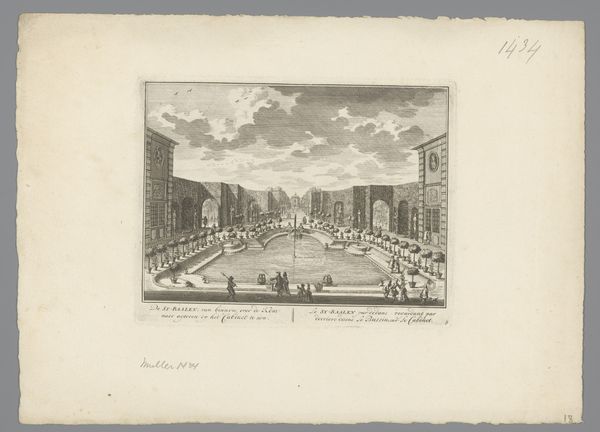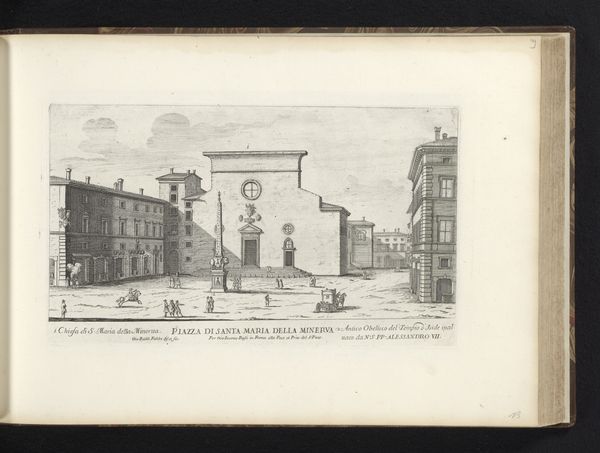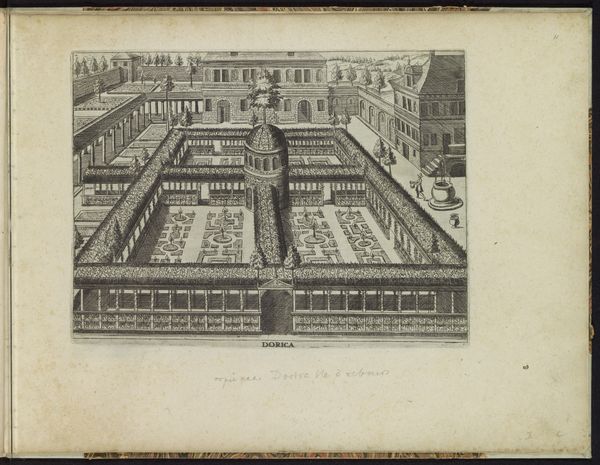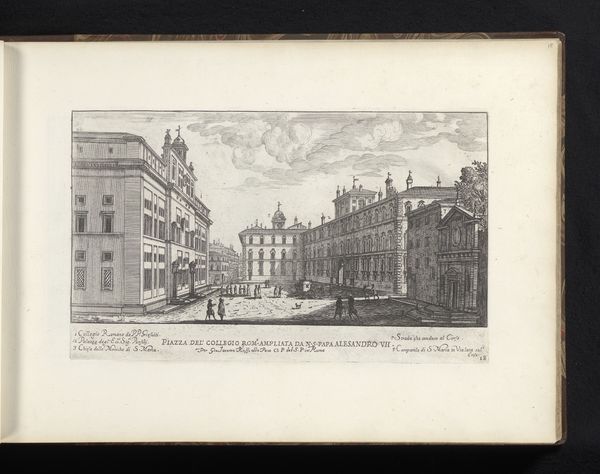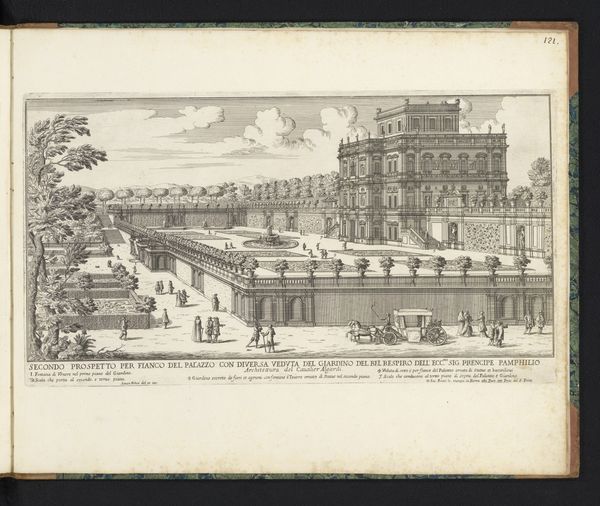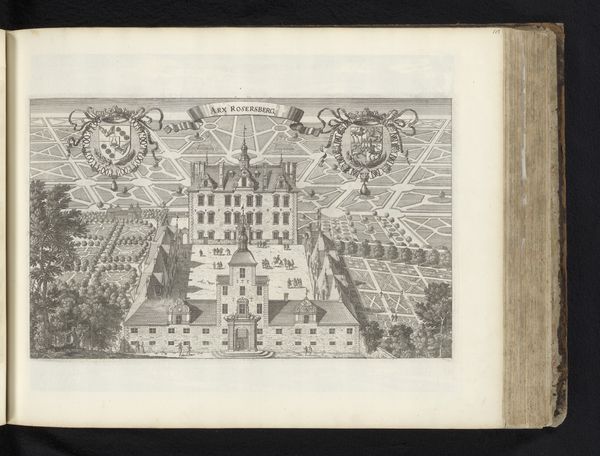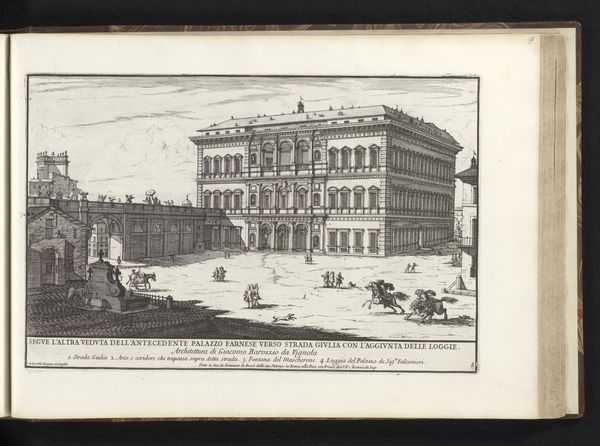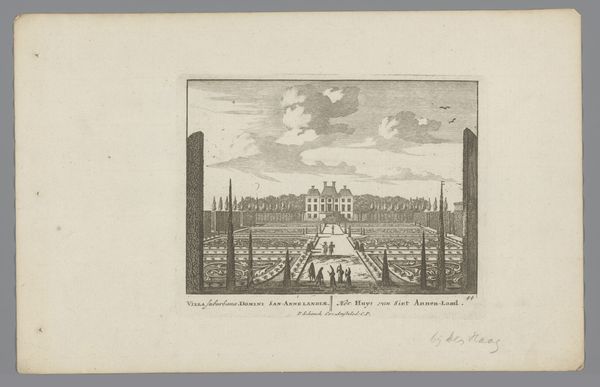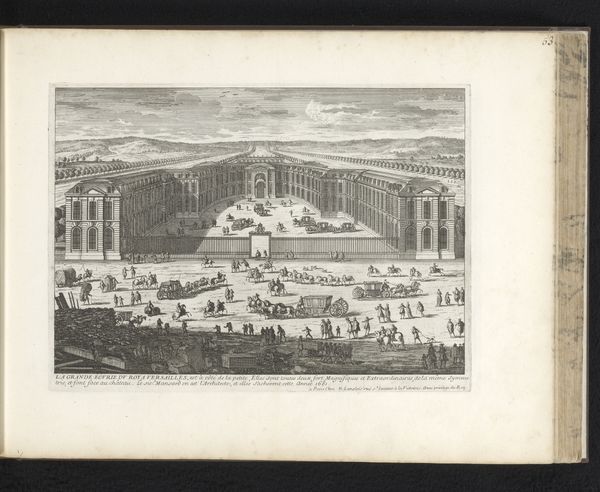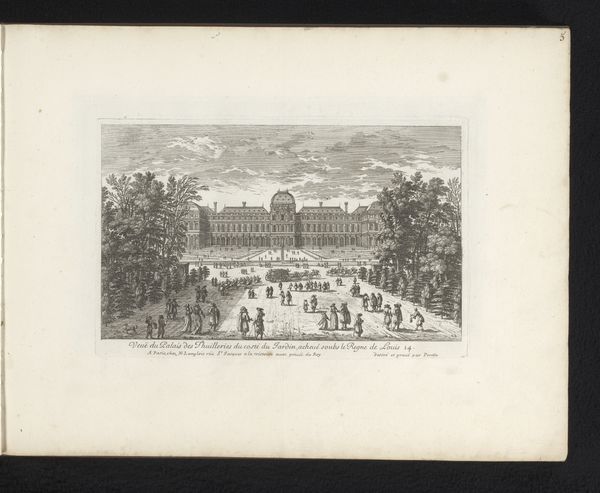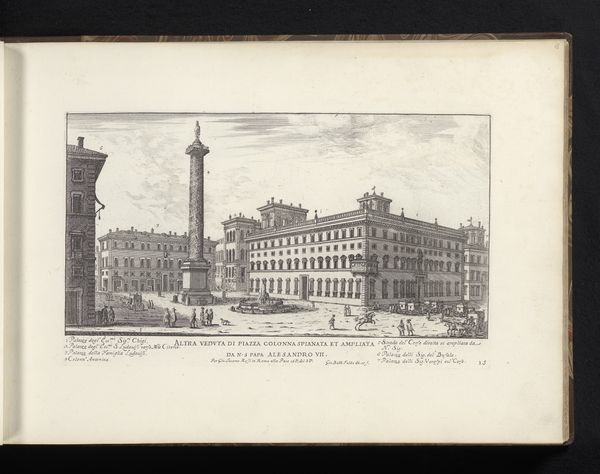
print, engraving
#
baroque
# print
#
landscape
#
perspective
#
geometric
#
cityscape
#
engraving
Dimensions: height 286 mm, width 334 mm
Copyright: Rijks Museum: Open Domain
Willem Swidde made this print of the gardens at Rosersberg Palace with etching around 1690, and it presents an intriguing view into the culture of the Swedish elite. The symmetrical gardens, populated with classical statuary, embody a desire to emulate continental European models of power and sophistication. These formal gardens, popular among the aristocracy, were not merely aesthetic spaces but powerful statements of control over nature and, by extension, society. They reflected an ordered world, reinforcing social hierarchies and legitimizing the elite's dominance. Examining estate inventories, architectural plans, and social chronicles can reveal how these images served to promote the cultural aspirations and political ambitions of their patrons. Through such research, we come to understand the public role of art and the politics of imagery, recognizing that artistic production is always shaped by prevailing social conditions and institutional forces.
Comments
No comments
Be the first to comment and join the conversation on the ultimate creative platform.

